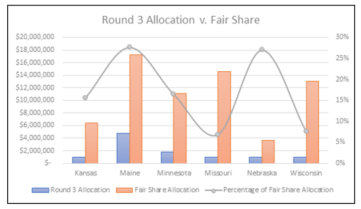The USDA’s food boxes: the saga continues
I cannot believe there is anything further to say about the Farmers to Families food boxes, the $4 billion USDA program that pays distributors to pick up dairy, meat, and produce, put it in boxes, and deliver the boxes to food banks, which then hand them out to people who need food. My most recent post on the inclusion of a personal letter from President Trump in the boxes is here.
The USDA now says it has distributed 100 million of these boxes.
Politico’s Helena Bottemiller Evich reports that the USDA now requires the private companies that collect, pack, and deliver the boxes “to also stuff the Trump letters into the package — an expansion of the controversial letter policy with just…days until the presidential election.”
The Counter’s Jessica Fu (to whom I owe an apology for spelling her name incorrectly the last time I quoted her) writes that “Religious groups distributing Covid hunger-relief boxes are praying with recipients, taping Bible verses onto flaps, and soliciting donations. Some of these practices may violate federal regulations.”
The Hunger Task Force says that the program is discriminatory: “Wisconsin has been underrepresented in all rounds of the program while Wisconsin’s hungry line up by the carload for assistance that has now been completely severed.”
 New York legislators are also complaining. They wrote a letter to USDA Secretary Sonny Perdue:
New York legislators are also complaining. They wrote a letter to USDA Secretary Sonny Perdue:
in the transition between the CFAP vendors selected for rounds two and three, miscommunication from USDA has left many food pantries in New York City suddenly without food, causing upheaval in the lives of those families who were relying on their local pantries for meals. We understand that the new vendors selected for round three of this program were required to specify the counties or boroughs to which they would provide food. However, this has forced many nonprofits and food pantries who had relationships with vendors no longer serving their county or borough to scramble to find new partnerships, with no guidance from USDA, no overlap in service
provision, and nowhere to turn for help.
On the saga goes. It would have made so much more sense—financially, logistically, and humanely—for the USDA to strengthen SNAP enrollments and benefits. Some of this is happening anyway, but the long history of food banks tells us that they can never meet needs on an ongoing basis. SNAP, imperfect as it is, still is a demonstrably better means of relieving food insecurity.

